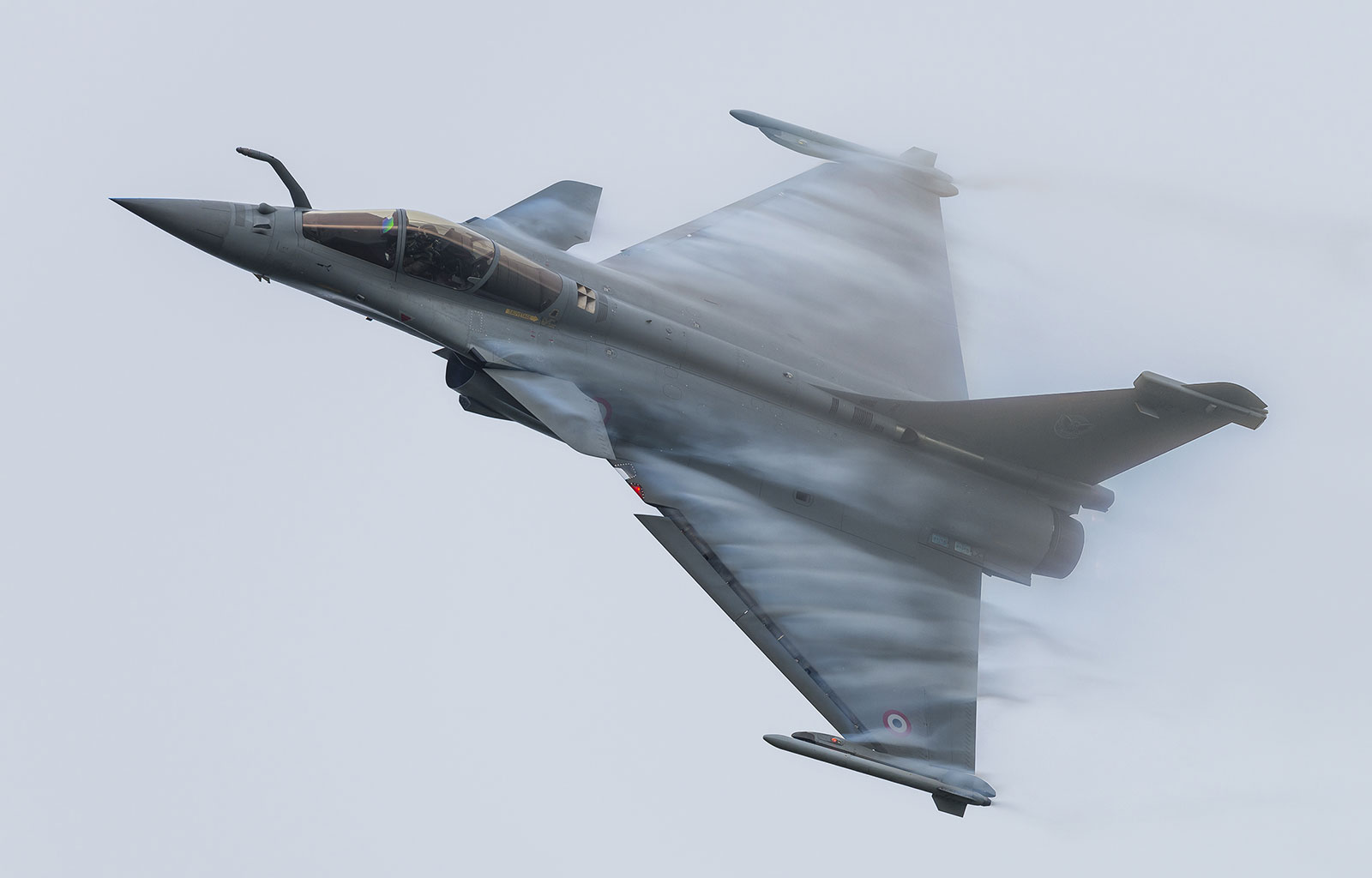
In September this year, a new building will begin to take shape at the Indian Air Force’s frontline Ambala base in the northern state of Haryana, home to the country’s Jaguar fighter-bomber fleet. Within this new building will be equipment Indian pilots have only encountered before at air shows demonstrations and bilateral exercises with foreign forces. The equipment is a set of synthetic collective training simulators built by French firm Sogitec and is almost absurdly ahead of anything IAF crews have had the luxury of calling their own.
If you’re wondering about the title of this report, we chose it after considerable deliberation. While a legitimate debate swirls over the economics of purchasing 36 Rafale fighter planes from France’s Dassault Aviation and the impact it will have on budgets and future procurement decisions, there is no question that the ecosystem and paradigmatic shift that the French fighter brings along gives the IAF tools it has never come close operating before. The ambit of this report is not to debunk or refute questions about the Rafale deal itself, but to provide the first detailed picture of what precisely the aircraft and its support system will do for the Indian Air Force. The short answer: a lot.
On a visit to the Paris Air Show at Le Bourget, Livefist was given the first ever tour of preparations for Rafale deliveries to India that begin at the end of 2019. Eighteen aircraft each will populate two squadrons at Ambala and Hasimara in the east. Here’s Livefist’s list of ten reasons why the Indian Rafale heralds the first substantive leap of transformation in decades.
[dropcap]1.[/dropcap] First off, the Rafale for India is NOT part of the conventional fighter squadron bean count in the strictest sense. It is clear now that arguments against the small number of aircraft opted for by India don’t fully hold. While the Indian Rafale deal doesn’t have an options clause for more aircraft, top sources at Dassault clarified that it was conceivable for government to government discussions around the time of delivery in 2019 to yield a decision on additional orders at currently negotiated rates for up to 36 more Rafales, given the IAF’s express requirement for at least that additional number. Top French government sources additionally told Livefist that they wouldn’t be surprised if the IAF chose not to grow its fleet beyond 36 (or 54 aircraft at the upper end) in the near term, since the real growth, they hoped, would be from the Indian Navy. It should be remembered, however, that both Dassault and rival Boeing both see a separate twin engine fighter requirement from the IAF down the line. Dassault is clear that a Make in India thrust will require bigger numbers either way. The reason is well-known: the Indian Rafale is a strategic delivery weapon for air-delivered nuclear missiles, and therefore doesn’t really count itself in the traditional 42 fighter squadron tally. This is not to suggest that the Rafales won’t perform their roles as a conventional deterrent too (especially given the armament they’re coming with and the location of their two squadrons on the Pakistan and China frontiers), but their unique mission as part of India’s nuclear triad stands clearly defined.
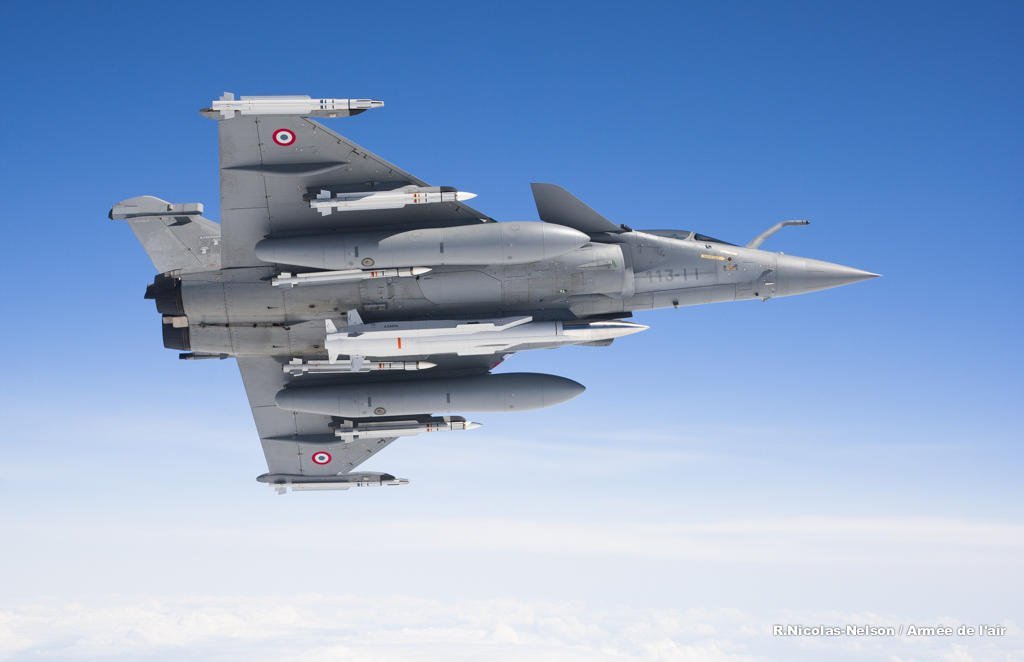
In 2009, we had written (presciently, may we add) that the Rafale’s explicitly stated nuclear delivery capability was a marked strength in the then six-way fighter contest. With India’s upgraded Mirage 2000 jets to hold fort for another fifteen years as our nuclear delivery aircraft, the Rafales explicitly take on that onerous role next. Dassault recognises that. And that’s why its growth driver for the Rafale in India isn’t the IAF at all, but the Indian Navy, where it faces off in what promises to be formidable battle with Boeing’s F/A-18 Super Hornet (we’ll have a dogfight piece up soon).
[dropcap]2.[/dropcap] The Indian Rafale will be a modified version of the F3R standard that is currently on track towards qualification and validation in 2018 by the French government and military. The F3R Rafale is centered around integration of the MBDA Meteor beyond visual range air-to-air missile, the Thales TALIOS laser designator pod and the laser homing version of Sagem’s AASM Hammer air-to-surface munition.
The IAF has chosen for the moment to integrate the Israeli Litening pod on the Rafale for sensor commonality across platforms (it ordered 164 last year for its Su-30s and MiG-29s). Livefist can confirm, however, that the IAF has ‘optioned’ the TALIOS pod (which replaces the obsolete in-service Thales Damocles pod) for a possible future integration. The IAF has similarly optioned the Sagem AASM Hammer system for a possible decision once Rafale deliveries begin, though it will hit the ground running with Israeli Spice guidance kits to begin with. The Indian Rafale will sport the Thales AREOS recce pod. Rafale pilots on rotations over Iraq said the AREOS had been performing splendidly in the operational tempo there, especially with its ability to beam high resolution images back to the Charles De Gaulle aircraft carrier, allied units in the air and on ground, as well as decision-makers. The F3R also includes attendant software upgrades to on-board sensors and avionics.
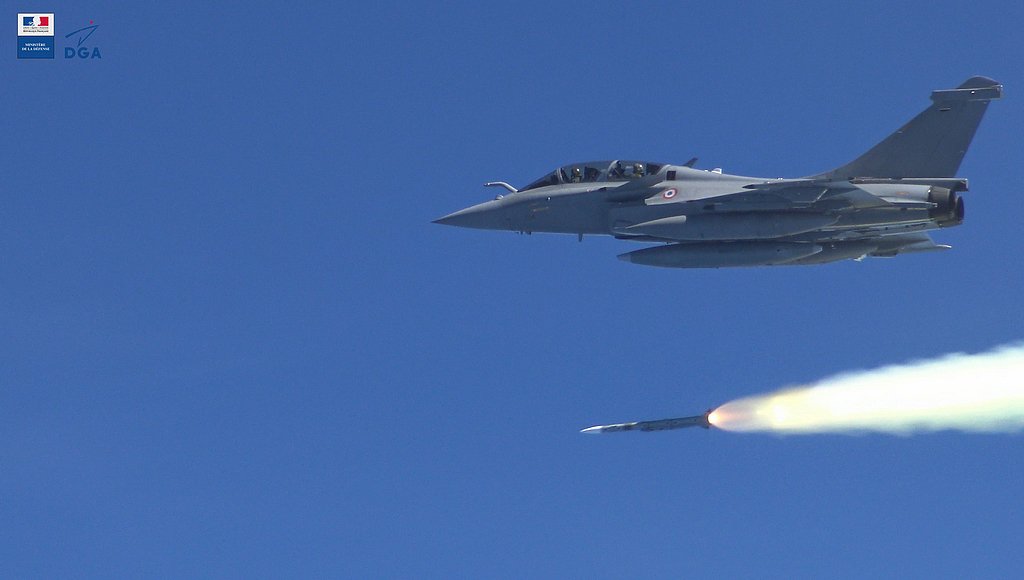
[dropcap]3.[/dropcap] India’s Rafales will operate the Meteor BVRAAM, which enters service with the French Air Force soon. France’s Direction Générale de l’Armement (DGA) announced two weeks ago that a final live guided firing of the Meteor from a Rafale had been successfully conducted at the Biscarrosse missile test range near Bordeaux in southwest France. In twin loadouts with the SCALP cruise missile that India has opted for, the two weapons give the IAF an unprecedented stand off air-to-air and air-to-surface capability in conflicts on either front with Pakistan and China. The timing of Rafale deliveries to India is such that the Meteor will be concurrently operational with both the French and Indian air forces.
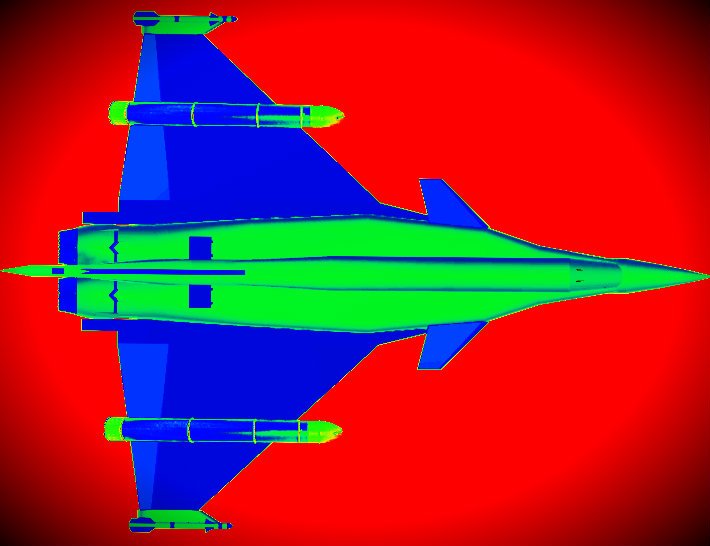
[dropcap]4.[/dropcap] India’s Rafale will deploy the in-development BrahMos NG missile in either a twin or single weapon load-out when the system is ready from 2021. The MBDA Scalp and BrahMos will provide planners with unique subsonic/supersonic stand-off attack options available to no other air force in the world. Modifications, coding extensions and testing will be conducted in India with assistance from Thales and Dassault. The Rafale deal also includes assurances for coding extensions to other in-development Indian weapon systems, including the Astra BVRAAM.
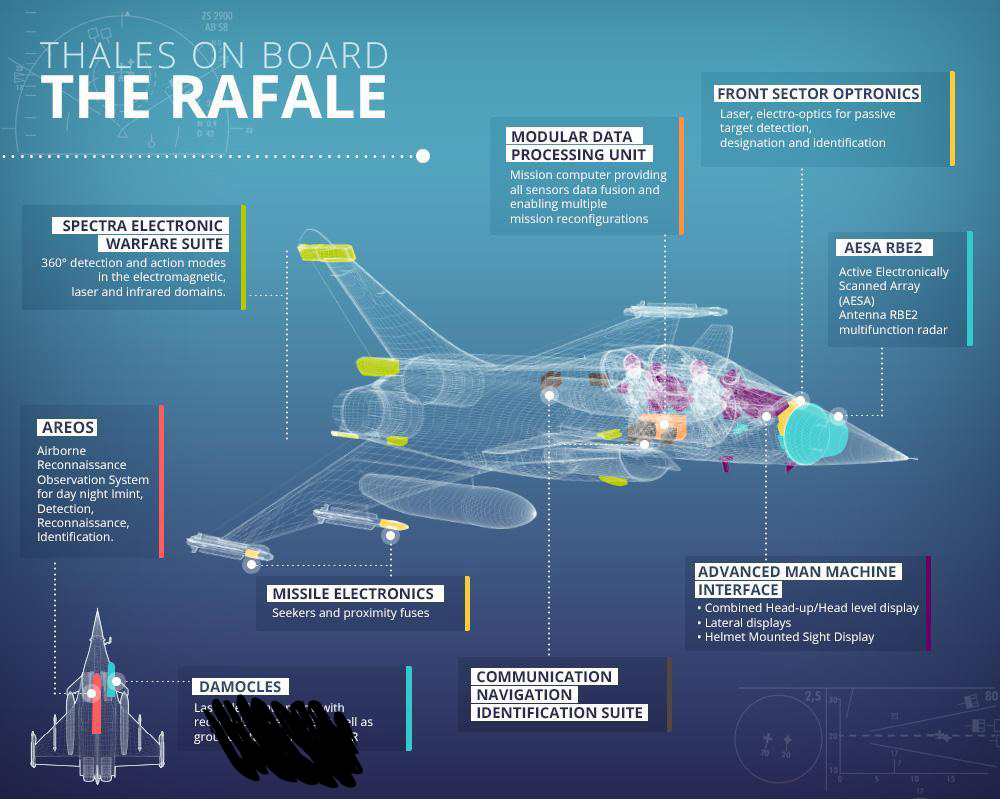
[dropcap]5.[/dropcap] The Indian Rafale will sport the fully internal SPECTRA electronic warfare system, billed as the ‘cornerstone of the Rafale’s outstanding survivability against the latest airborne and ground threats’. The Spectra stands to be a major leg up for the Indian Air Force. Showcasing the system and its capabilities has been easy — the system has had a daily torture test over the years in hostile airspace over Libya, Iraq and Syria. Several pilots from the French Air Force and Navy that Livefist interviewed praised the Front Sector Optronics (FSO) visual and infrared sensor that comes with the Indian Rafale. Described officially as ‘Operating in the optronic wavelengths, it is immune to radar jamming and provides covert long-range detection and identification, high resolution multi-target angular tracking and laser range-finding for air, sea and ground targets’, the FSO is a secondary sensor that the IAF saw great value in during field evaluation trials of the Rafale. The IAF’s current rules of engagement place a premium on visual contact, making the FSO a valuable addition to the combat system it will operate. Not counting the Israeli Elta ELM-2052 combat radar that’s under test on India’s Jaguars, the Thales RBE 2 AESA radar on the Rafale will be the IAF’s first default active electronically scanned array combat radar on a frontline Indian combat aircraft. A whole world of discovery awaits on that front.
Incidentally, the Indian Rafale will be the first IAF combat aircraft that stands technologically linked to improvements being progressively added to Rafales in the French military. The improvements under the proposed F4 standard, for instance, which was announced in March and is currently under discussion, will transfer to the IAF’s fleet when ready. Sources told Livefist that the F4 standard will focus not just on tweaks based on the Rafale’s combat experience in Iraq, Libya and Afghanistan, but also the first full effort to shorten and further simplify the time required to churn out a full-ops Rafale pilot. The IAF will be able to draw on any and all improvements made to the Rafale system.
It is important to note that India’s adversaries, notably Pakistan, could have limited or direct access to some or all of this technology via Islamabad’s Air Force exchange programs — for instance, Qatar’s Rafales (ordered in 2015) could potentially be available during exchange programs to Pakistan Air Force pilots. Pakistan, incidentally, operates Dassault-built aircraft (Mirage III/V) and has been a customer for decades on other platforms, including the Atlantique naval patrol platform.

[dropcap]6.[/dropcap] The aircraft, its weapons and its on-board systems apart, some of the most transformative elements in the Rafale package involve the surround sound. At the heart of the training ecosystem coming with India’s Rafales is a set of room-sized computers built by Sogitec, a fully owned subsidiary of Dassault Aviation. Termed synthetic collective training, two Sogitec training centres will be installed at Ambala and Hasimara, each equipped with two Rafale simulators for initial and hands on training, flight and Weapon Delivery and Navigation System (WDNS) procedure learning including repetition of complete missions with complex tactical environments, two Unit Level Instruction System (ULIS) self-service trainers and one Part Task Trainer (PTT) for guided or free-access training on a restricted number of key procedures. The Ambala training centre will additionally have Rafale Maintenance Trainer and Computer-based Trainer rooms. The Indian military has had a taste of next generation simulation and planning equipment in the last few years with its new P-8I fleet principally and the C-130J & C-17 fleets, but this will be the first time that such complex and immersive systems will be available for frontline combat aircraft.
Your correspondent got a full demonstration of the collective training system that the Indian Air Force will get. The demo involved a Rafale in a complex tactical training scenario involving a surveillance drone and an NH90 helicopter operating together to rescue a pilot shot who had been forced to eject behind enemy lines. The demonstration involved the coordinated targeting of air defences using the AASM Hammer, a low-level attack of manned positions using the Rafale’s gun and the final extraction of the human survivor with drone eyes on the full tactical picture around the event.
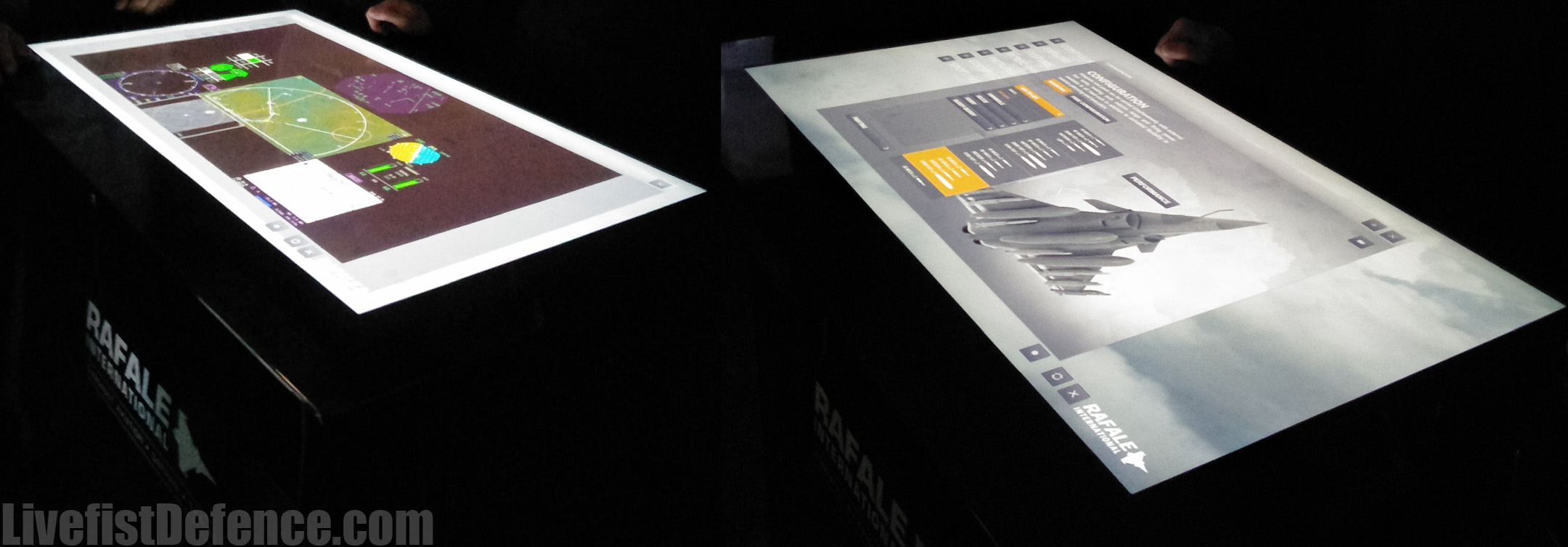
[dropcap]7.[/dropcap] Traditional pre-mission tabletop planning and charting will be replaced by the Rafale Touch set of touch-screen simulation tools will allow IAF mission planners to easily and quickly project scenarios on true maps with dynamic constraints including load-out, fuel, area denial etc. The Rafale Touch systems that Livefist was given access to additionally had scenarios for a true comparison of capabilities within a chosen configuration and mission between the Rafale and other aircraft that may be available in inventory, including the Mirage 2000. Since the Rafales are currently deployed in Operation Enduring Freedom in alliance with other types, the system also includes a tactical comparison for specific missions between Rafales, F/A-18s, other NATO aircraft and Gripens. The Rafale Touch in India will come with modules for the Jaguar, Mirage 2000, MiG-29 and Su-30 MKI.
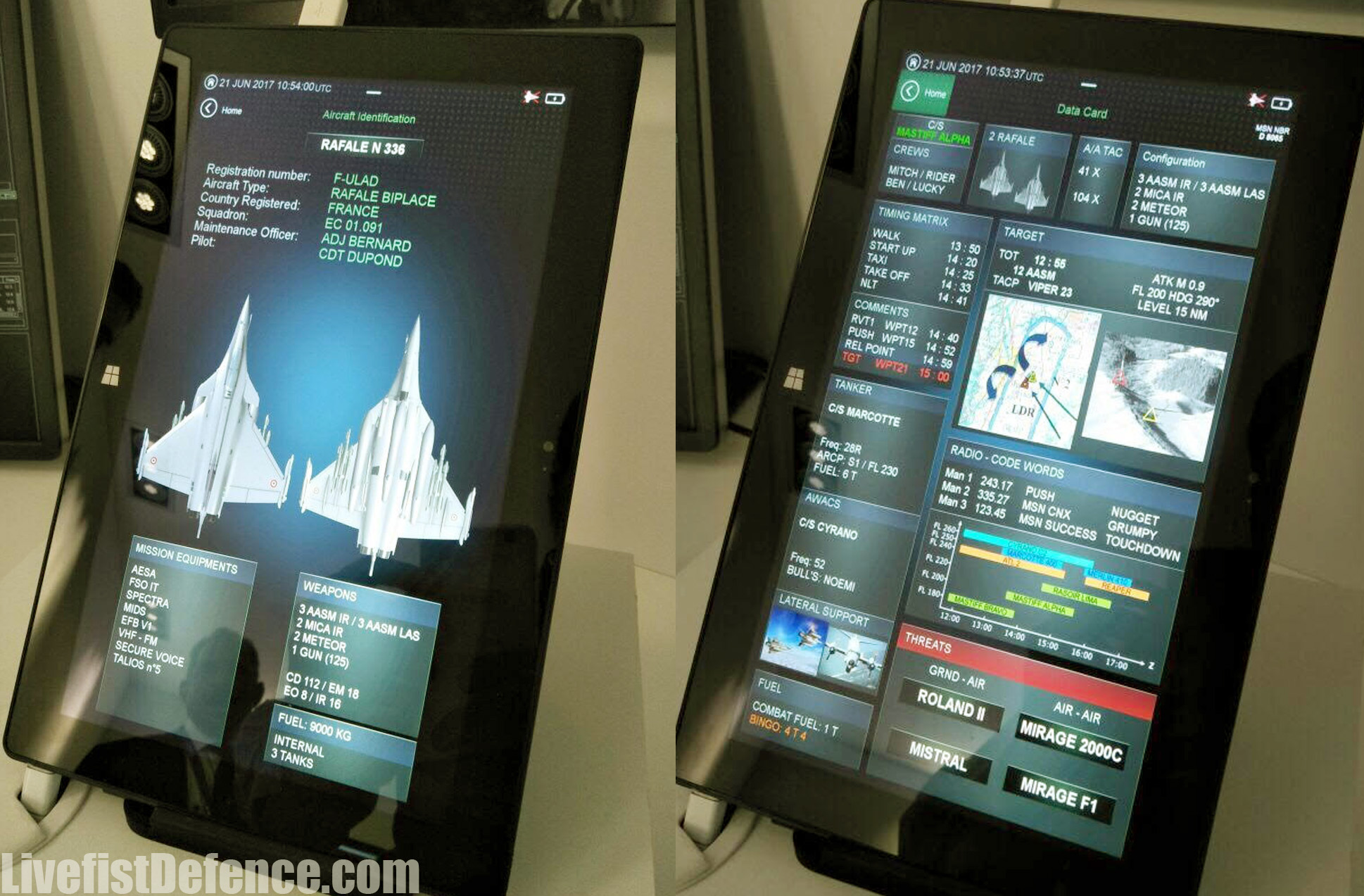
[dropcap]8.[/dropcap] Adding to the increasing app/tab quality that imbues modern fighter training is the very nifty system you see here: the FlightSphere pilot’s tablet system currently under final development for the Rafale, and to be offered to the Indian Air Force once ready. Based on a smaller customised version of the Microsoft Surface tab, the FlightSphere tab is a full personal mission and flight planning system for fighter pilots. Pilots will use the tab offline to conduct all tactical mission planning, then carry it with them into the cockpit where it plugs right into the aircraft’s mission computer. The system is being designed to be carried in a flightsuit pocket on the pilot’s lap. Showcased for the first time at the Paris Air Show this year, the FlightSphere is already active with the Dassault Falcon and will be soon with the Rafale. The Indian Air Force is understood to have already shown interest.
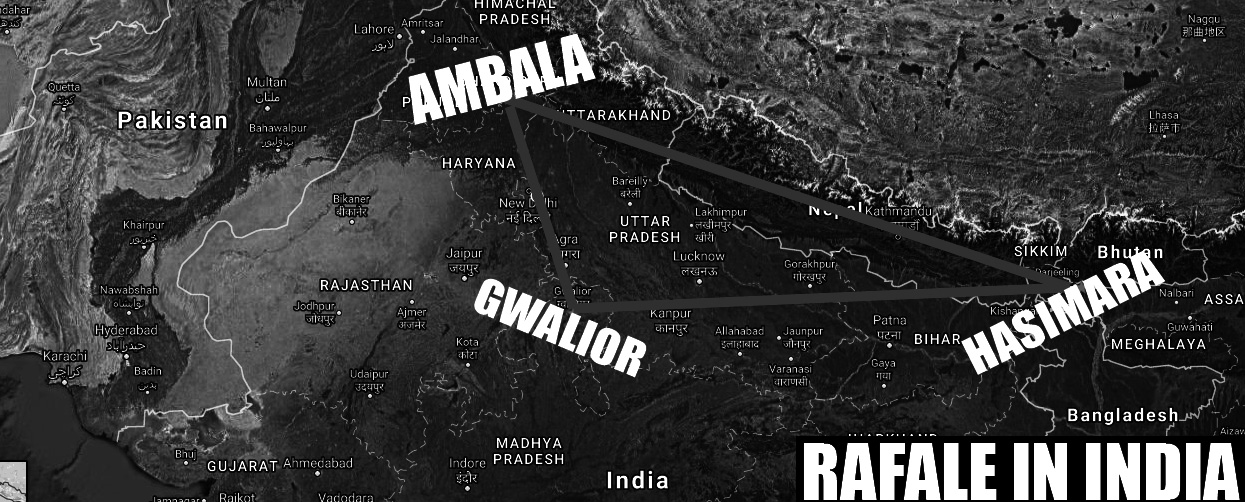
[dropcap]9. [/dropcap] While the Ambala and Hasimara bases will be the IAF’s principal Rafale centres (17 Squadron ‘Golden Arrows’ is slated to be the inaugural Rafale unit), the Gwalior Mirage 2000 station will be fully integrated right from the start for operations and cooperative training. The collective training and synthetic learning architecture being installed at Ambala and Hasimara will be linked directly to a similar module in Gwalior, being set up for the IAF’s upgraded Mirage 2000-5 fleet (eight have been upgraded so far out of 51). This will allow pilots at the three bases to fly cooperative simulated missions using both aircraft types on a long list of existing and fresh combat scenarios. These will, of course, include area denial combat air patrol operations on the Chinese front and northern sectors, close air support and interdiction missions in Pakistan-occupied Kashmir, precision strike missions along the Line of Control and cooperative reconnaissance missions/anti-surface missions on both of India’s seaboards. The experience of the Gwalior squadrons, coupled with the new tools coming with the Rafale will be a huge mutual boost to both bases, types and fleets.

[dropcap]10. [/dropcap] This point may be way down on the list, but it’s difficult to exaggerate the significance of the maintenance training tools that the Indian Air Force gets with the Rafale. To say that the the entire approach from training maintainers right down to the actual maintenance-friendly architecture of the Rafale system, Indian maintainers are all set to encounter a serious legacy leap. Indian maintenance crews will begin training in France next year. Your correspondent had a chance to try out two systems — one that’s definitely coming with the Rafale (the Rafale maintenance trainer) and the robustly impressive Microsoft HoloLens-based virtual/augmented reality hands-on documentation and training system (HADOC) that is being offered to the Indian Air Force. Livefist participated in an exercise to remove the HUD on a Rafale using the maintenance trainer and used the HADOC system (see photo) to inspect the interiors of a Rafale that was up for repair. The use of commercial off the shelf (COTS) gadgets for precision engineering tasks is something the Indian Air Force will be employing for the first time with the Rafale. The intuitive, videogame-like qualities to training will, in Livefist’s view, be one of the most compelling bringers of change in the IAF’s approach to its missions.
* This report has been updated with a clarification and additional detail on the options clause for Indian Rafales.
Coming up on Wednesday: Part II of our ‘In Rafale Country Series’ — True stories & lessons from the Rafale over Iraq & Syria

What is the logic behind 28 + 8 in the 36 ordered?
Standard squadron strengths are 16+2, which should translate to 32+4.
Assuming the extra twin seat orders specifically for the strategic delivery role?
Trainers
Does F3R integrate a two way datalink with Meteor?
Is F4 paid for or is it subject to future acquisition decisions?
(considering that much of F4 involves the optimization requested by IAF such as HMDS and integration of new weapons)
Any information on the version of M88s ordered and an upgrade path if any in the future?
The news in France are that Rafale will only use on way datalink for Meteor.
France decided to wait for Rafale F4 standard to use HMDS, but F4 isn’t mandatory.
Qatar will get Targo II HMD with Rafale EQ/ DQ also based on F3R. Se the picture of the pilot in backseat:
http://www.defens-aero.com/dassault-aviation-debute-campagne-essais-vol-viseur-casque-rafale-qatariens
So far there is no plan in France to make a 90kN M88. Current upgrade are focused on enhancing reliability and lowering maintenance cost.
The M88 is modular which make upgrade easier. I don’t see Snecma sustaining different variants of the M88, so I imagine that all customers will keep up with the French engine latest variant.
@jojo merci beaucoup !!
Does SPECTRA contain a low band jammer or planned to ?
Does the TALIOS option bring any new capability compared to the LITENING pods operating with IAF already?
I don’t know well enough Litening pod, but Talios is coming with high resolution IR sensor (much higher than Damocles) and color TV sensor. Articles were published about using the laser to enhance imaging.
https://www.thalesgroup.com/sites/default/files/asset/document/fiches_talios-gb_sans_repere-hd_0.pdf
Finally is the count of upgraded M2K not 49?(Considering the crashes of two twin seaters)
As we are down to 49 from 59 acquired and ideally should have 54 to fully equip three squadrons rather than the two and a half setup that we have now (18+18+?10?).
Any options on attrition replacements considering that IAF plans to keep this fleet operational for some time into the future?
Impressive !
Finally a technically good article on the Rafale on what it brings to the IAF. Great work Shiv, as usual you are spot on target ! A refreshing change from the shallow articles.
Rafale will bring some advanced technologies . Hope it is utilised well by IAF. It should complement the 300+ light single engined fighter-bombers being planned by GOI .
If it is planned for a nuclear role, why is it being based just 285 km from pakistan border in the west or 100 km from china in the east ?
MMRCA confirm after 6 years evaluation by IAF, the superiority of rafale on all domain on Eurofighter and F18,F16,gripen,Mig35, may be india love to replay and replay and lost time and money
for get always same result. Rafale is superior to F16 and gripen E is equivalent to M2000 with aesa with poor survivabillty. Only the F35 can be equivalent to rafale F4 in some case. F16/F18 are old gen jet fighter and time is over. gripen E is not war proven and 10 years to be mature, Mig35, always same issue, build tejas mk2 with Dassault/Safran/Thales support, it is the best solution.
I am fully convinced now that induction of Rafale in the IAF will mark a paradigmatic shift. Kudos to the author for intricate details. However, I would like to know how the induction of cutting edge aviation technology with Rafale is going to upgrade Tejas mk 2 or the MMRCA production in India?
A purchaser can never win – however revolutionary is the equipment he has purchanged. In bitter reality of war games, thanks to OEMs exploitation during war, from Day1 purchasers keep reducing its number whereas producers keep on adding – so hampering sustainability in D day. Wrong planning against a worthy enemy (both Pakistan and China is a producer now) is dangerous. We will keep on loosing billions in seek of marginal better products and loosing our struggle to reach the perfection.Thanks!?
Rafale isn’t marginally better than Pakistan F-16 or JF-17, it’s way better. And even China don’t have AA missiles as good as Meteor. Rafale is a game changer in the region.
During Irak-Iran war the Mirage F1 was the work horse of Iraki Air Force, and Irak wasn’t short of supply.
Shiv is a very good salesman for Dassault. He has already earned a lot of goodwill for them. Hope he does at least as much for Indian products.
Whither Part – 2 ?
‘Rafale will deploy the in-development BrahMos NG’
Shiv Please get your facts straight and don’t report obscure facts.
Do you even know how much effort will go into integrating Brahmos NG for Rafale?
Again check facts before writing/reporting them.
Rafale purchase is a failure of both Indian PSU’s and Private sector to produce anything viable
Rafale deal just doesn’t seem right, given Reliance’s involvement.
Nothing to be proud of or worth reporting.
As a nation we should be ashamed that we are importing Rafale.
Sorry, article justice do justice to the .
Sorry, article doesn’t do justice to the title.